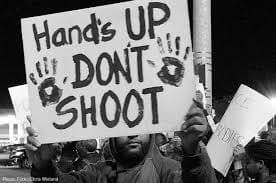by Jason Tarnow | Oct 2, 2020 | Crime, Legal Rights, Media, Police, Politics, Wheels Of Justice
Whenever incidents relating to terrorism in Canada hit the news, the eyes of Canadians widen with revolt. Recent headlines elicited a similar response, with a healthy dose of confusion and curiosity added to the mix.

On September 21, 2020, criminal charges were announced against 25 year old Ontario resident Shehroze Chaudhry – but not due to allegations of committing acts of terrorism. Rather, Chaudhry has been charged under Section 83.231(1) of the Criminal Code – perpetrating a hoax regarding terrorist activity:
83.231 (1) Every one commits an offence who, without lawful excuse and with intent to cause any person to fear death, bodily harm, substantial damage to property or serious interference with the lawful use or operation of property:
(a) conveys or causes or procures to be conveyed information that, in all the circumstances, is likely to cause a reasonable apprehension that terrorist activity is occurring or will occur, without believing the information to be true; or
(b) commits an act that, in all the circumstances, is likely to cause a reasonable apprehension that terrorist activity is occurring or will occur, without believing that such activity is occurring or will occur.

Chaudhry was a frequent guest on an award winning New York Times podcast known as “Caliphate”. He spoke, in gruesome detail, of his time as an ISIS executioner in Syria, among other things. But the charges levelled against him assert that his personal experiences as an ISIS soldier are fabricated.
While the NYT claimed to have verified his role in ISIS, he gave conflicting accounts to CBC, even going so far as to say he would take a polygraph to prove he had never killed anyone. He likely thought this would absolve him any criminal liability relating to terrorism offences in Canada, but the charges against him refute this misconception.
The details released from the police don’t specify if any other person was harmed or killed due to the alleged yarn by Chaudhry, but they will play a determinative role if he is convicted. The sentences range from a fine and imprisonment in a provincial correctional institution if prosecuted summarily, to life imprisonment should Crown proceed by indictment.
Chaudhry’s case demonstrates that Canadian jurisprudence condemns all activity relating to terrorism – whether it’s the real deal or not.
by Jason Tarnow | Sep 28, 2020 | Crime, Legal Aid, Legal Rights, Media, Politics, Social Media, Wheels Of Justice
Section 2 of the Canadian Charter of Rights and Freedoms grants all Canadians the fundamental right of freedom of expression – but as one young man in Markham, Ontario learned this week, the Charter also permits the enforceme nt of reasonable limits on expression.
nt of reasonable limits on expression.
18 year old Tristan Stronach, a grade 12 student, was charged under section 372(2) of the Criminal Code – making indecent communications – after his instructor had to conclude an online lesson after Stronach allegedly made racist remarks about the black community. The nature of the alleged comments, while not described specifically, has caused some to ask: why isn’t he being charged with a hate crime?
The answer is: because there is no specific “hate crime” offence in the Criminal Code.
Section 372(2) of the Criminal Code reads as follows:
Indecent communications
(2) Everyone commits an offence who, with intent to alarm or annoy a person, makes an indecent communication to that person or to any other person by a means of telecommunication.
“But what about hate speech?”
Section 319(1) of the Criminal Code reads as follows:
Public incitement of hatred
319 (1) Everyone who, by communicating statements in any public place, incites hatred against any identifiable group where such incitement is likely to lead to a breach of the peace is guilty of:
(a) an indictable offence and is liable to imprisonment for a term not exceeding two years; or
(b) an offence punishable on summary conviction.
Wilful promotion of hatred
(2) Everyone who, by communicating statements, other than in private conversation, wilfully promotes hatred against any identifiable group is guilty of
(a) an indictable offence and is liable to imprisonment for a term not exceeding two years; or
(b) an offence punishable on summary conviction.

While it has been made clear that the allegations relate to racist comments towards a single identifiable group – the black community – charges under this section were likely not approved because the evidence is unable to support a conviction. The comments were not made in a “public” place, and while they were made in the virtual presence of a group of individuals, they did not promote hatred – i.e., the comments weren’t made in such a way that they would result in other individuals following suit and creating a breach of the peace as a result.
Notwithstanding the above, if the accused is convicted of making indecent communications, the court will consider to what degree bias, prejudice, or hate played a role. These are aggravating factors that could result in a harsher sentence. Through this legislative structure, these aggravating factors can be considered for a variety of offences – assault, theft, murder, and so on.
As Canadians, we are very fortunate to live in a country that allows us to speak, move, and exist freely – but cases like this are a reminder that equality reigns supreme.
by Jason Tarnow | Sep 2, 2020 | Crime, Criminal Attorney, Legal Rights, Media, Police, Politics, Social Media, Uncategorized
In one of our previous posts, we discussed biometric technology and the role it plays in Canadian law enforcement. It is, however, only one of the “predictive” tools utilized by the police in relation to criminal investigations.
A new report by the Citizen Lab at the University of Toronto goes into alarming detail regarding growth of algorithmic policing methods, and how this technology compromises the privacy rights of Canadian citizens. The report is incredibly thorough and comprehensive, delving into how this controversial technique offends various sections of our Canadian Charter of Rights and Freedoms. Firstly, though, it is important that our readers understand what algorithmic policing is.

The overall success of any algorithm is the system’s ability to gather, store, and analyze data – with law enforcement’s methodology being no different. A “location focused” algorithmic approach seeks to determine (predict) which areas are more likely to see criminal activity. The algorithmic system in these pursuits analyzes historical police data to identify geographical locations where crimes are, in theory, more likely to be committed. If this sounds familiar to you, then you’ve likely heard of, or accessed, the Vancouver Police Department’s GeoDash crime map – an online tool where you can navigate a map of the City of Vancouver by crime occurrence. You can choose from a variety of offences on the dropdown list, including homicide, break and enter, mischief, theft, and “offences against a person” which likely includes a variety of crimes such as sexual assault, assault causing bodily harm, and uttering threats. By looking at this map, you get an idea of which neighborhoods in Vancouver are most vulnerable to crime – except that it’s a little bit more sophisticated than that, and goes far beyond simply dropping a pin on the map. The public can see where the crime took place, but not who is alleged to have committed it. The offender’s personal information is logged, in as much detail as possible, and becomes part of a larger system dedicated to predictive surveillance – i.e., it creates a profile of which individuals are more likely to commit a particular crime. This profile can be used to identify people who are “more likely to be involved in potential criminal activity, or to assess an identified person for their purported risk of engaging in criminal activity in the future”.

While this information is definitely concerning, there is another issue: we have very little insight into the extent that this technology is being used. We know that the methods by which police gather information have historically discriminated against minority groups and those living in marginalized communities. This seems to guarantee that the VPD’s use of algorithmic investigative techniques relies on data that is often obtained through biased methods. We know that black and indigenous individuals are disproportionately represented in the correctional system, which can only mean that they are disproportionately represented in respect of these algorithms.
Although not everyone agrees that systemic racism exists within the VPD, the calls to address, unravel and mitigate the harm to marginalized groups continue to amplify. The idea that information collected under the apprehension of bias will not only remain on record, but will be used to further future investigations, is an indicator that Canadian law enforcement’s road to redemption will likely be a bumpy one.
by Jason Tarnow | Jul 2, 2020 | Crime, Criminal Attorney, Legal Rights, Media, Police, Riots, Social Media, Wheels Of Justice
Over the last couple of months, there has been outcry from the public urging the use of BWC’s (Body Worn Cameras) for Canadian law enforcement. Although initially in response to the growing unrest relating to police brutality in the United States, there are echoes of abandoned intentions from Canadian officials dating back at least a few years.
Back in 2015, the Office of the Privacy Commissioner of Canada (“OPCC”) issued a publication regarding the use of BWC by police, in collaboration with privacy agencies in Alberta, New Brunswick and Quebec. The remaining Canadian law enforcement agencies from other provinces and territories acted “in consultation”.
For reference: according to the CBC, there were a total of 2 incidents involving the death of individuals at the hands of law enforcement in New Brunswick between 2012 and 2014, 12 incidents in Quebec, and 14 incidents in Alberta. Interestingly enough, British Columbia (on par with Quebec at 14 deaths) and Ontario (with the highest rate of police violence resulting in death in the country at 25 deaths between 2012 and 2014) were only acting in consultation.
The report hails the effectiveness of BWC to capture high quality images, videos, and audio recordings – so effective, in fact, that the OPCC had grave concerns regarding their ability to capture material that could jeopardize the privacy of innocent and uninvolved bystanders.

The report goes on to tout the value of BWC for evidentiary purposes, including analytics so sophisticated that the material obtained would likely be suitable for biometric comparison – aka, facial recognition.
There is no arguing the fact that the use of BWC by police has implications for the privacy of citizens in their everyday lives – especially since once fitted, citizens would likely expect on-duty officers to have their devices on a continuous basis as opposed to intermittently.
Benefits of BWC include the ability to review interactions between police and the public, recording communications between the police and suspects in the course of an investigation, identifying potential witnesses, and of course recording interactions between police officers. Many criminal cases involve evidence obtained through the use of dash cams, which provide audio from inside a police cruiser and video from the perspective of the driver. The effectiveness of this technology loses value when the investigation takes place outside of a police vehicle, as the audio often fails to capture intelligible communications between police and a suspect, or between officers themselves. Although the dash cam is kept running, the audio portion is often useless when the interactions between police and a suspect take place outside the vehicle, and the windows of the police cruiser are closed, or if the police/suspect leave the immediate area where the audio is successfully captured.
The report indicates that while continuous recording would undoubtedly provide a greater level of accountability for the actions of police, the threat to personal privacy reigns supreme:
“From an accountability perspective, continuous recording may be preferable because it captures an unedited recording of an officer’s actions and the officer cannot be accused of manipulating recordings for his or her own benefit. However, from a privacy perspective, collecting less or no personal information is always the preferred option”
In 2014, the Edmonton Police concluded a pilot project regarding the use of BWC by its officers. The conclusion?:
“The cameras had no effect on police use-of-force incidents and said there was no statistical difference in resolving police complaints”
According to an analysis done by CBC, there were a total of four deaths between 2012 and 2014 relating to officers of the Edmonton Police Service. By comparison, there were 9 deaths in the same period relating to officers of the Toronto Police Service. The results of the Pilot Project may have seen different results in a different jurisdiction.
The Edmonton Police explained that in addition to being ineffective to expose cases of police misconduct, the related expenses were simply unrealistic. Perhaps surprisingly, it’s not the cost of the devices themselves, but the expense to store and manage all of the material collected: somewhere between 6 and 15 million dollars over five years, which also includes hiring personnel qualified for the job.
Finding the balance between accountability, transparency and oversight of police against the protection of privacy for Canadian citizens is a legitimate and profound task – one that cannot be taken lightly. As the calls for BWC in Canadian law enforcement grow louder, and as Canadians revisit the reality of what it is to be privileged in this country, we can only hope that the values of dignity and equality are recognized as being more valuable than the cost of the equipment that very well could save lives.
by Jason Tarnow | Jun 23, 2020 | Crime, Legal Aid, Legal Rights, Media, Police, Politics, Riots, Social Media, Wheels Of Justice
“Systemic racism is so rampant in the United States, I’m from Canada so I can’t even imagine what that must be like!”
“Police brutality in the US makes me proud to be Canadian”
The two statements above reflect a dangerous and widespread misconception held by many Canadians as they observe growing unrest in the United States:
“Deaths of minorities at the hands of law enforcement just isn’t an issue here”
Of course, nothing could be further from the truth.

Systemic racism exists in institutions across Canada – and an analysis of police brutality against minorities performed by CBC reveals some startling data.
Between 2000 and 2017, CBC was identified 461 fatal encounters between law enforcement and civilians. The RCMP– Canada’s largest and only federal police force – is responsible for the highest number of incidents at 118 casualties, followed by the Toronto Police Service at 52, and the Service de police de la Ville de Montreal at 32. The data demonstrates that these occurrences continue to rise steadily across the country.
When looking at the study, it is obvious that Caucasian individuals represent the largest number of victims per ethnic group, composing roughly 43% of all casualties identified. They also represent nearly 80% of Canada’s total population.
Indigenous victims represent roughly 16% of all casualties identified, but account for less than 5% of Canada’s total population.
Black victims represent roughly 10% of all casualties identified, but account for less than 3% of Canada’s total population.
22% of the victims were unable to be identified by ethnicity.
These facts are alarming and highlight a trend of violence by law enforcement against identifiable minorities. Aggravating circumstances further, it is estimated that mental health and substance abuse issues afflicted approximately 70% of the 461 victims.
The data further reveals that the majority of these occurred in urban areas with diverse cultural communities – not within areas densely populated by minorities. What this means is that of the percentage of the 461 fatalities that involve people of color is grossly disproportionate to the overall population of the areas affected.

Gun related deaths accounted for over 71% of the 461 fatalities, use of restraint at just shy of 16%, physical force at 1.3%, use of an intermediate weapon (a tool not designed to cause death with conventional use, such as a baton) at 1.1%, and “other” accounting for 10.1% of deaths.
Perhaps most shocking of all is that these statistics have not been compiled and presented by the organizations with the most reliable sources of information – the law enforcement agencies themselves.
The analysis conducted by CBC provides a glimpse into the systemic racism that is alive and well within law enforcement agencies across the country, but it hardly tells the entire story.
The data relates only to fatalities – it does not represent the wrongful arrests and prosecutions of minorities in Canada, the disproportionate sentences that are imposed, or the loss of dignity and liberty.
It does not represent the interactions that don’t result in an arrest or charges, nor does it represent the victims of racism and bias who will never have the opportunity to tell their stories.



 nt of reasonable limits on expression.
nt of reasonable limits on expression.




